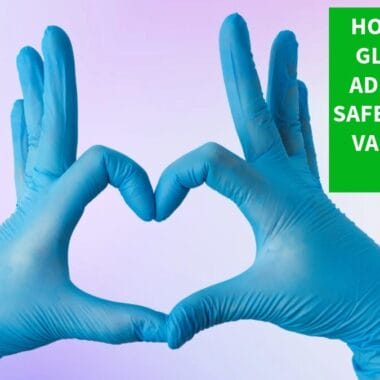What are PPE Disposal Procedures?
PPE (Personal Protective Equipment) disposal procedures are the guidelines and practices used to safely and effectively discard used PPE such as masks, gloves, gowns, face shields, and other protective equipment. Proper disposal is essential to prevent contamination, the spread of infectious diseases, and environmental harm. PPE disposal procedures ensure that contaminated equipment is handled carefully to protect workers, the public, and the environment from exposure to hazardous materials.
These procedures are especially important in industries such as healthcare, manufacturing, laboratories, and any environment where employees come into contact with hazardous chemicals or infectious agents. Improper disposal of PPE can lead to cross-contamination, the spread of infections, and environmental pollution, particularly when dealing with biohazardous or chemical-contaminated PPE.
Why PPE Disposal Procedures Matter in the Enterprise Environment
PPE disposal procedures are critical for ensuring workplace safety, regulatory compliance, and environmental sustainability. In industries like healthcare and manufacturing, where PPE is used to protect against exposure to infectious agents, chemicals, or hazardous materials, improper disposal can pose serious health risks to employees, waste handlers, and the public. By adhering to proper PPE disposal protocols, businesses can reduce the risk of cross-contamination, prevent the spread of diseases, and ensure compliance with safety regulations such as those set by the Occupational Safety and Health Administration (OSHA) and the Environmental Protection Agency (EPA).
In addition, improper disposal of PPE can contribute to environmental pollution, particularly when materials like plastics or contaminated waste are not disposed of correctly. Following PPE disposal procedures helps reduce the environmental impact of PPE waste and supports efforts toward sustainability.
Key Steps in PPE Disposal Procedures
PPE disposal procedures vary depending on the type of contamination and the specific industry requirements. However, the following are general steps involved in the safe disposal of PPE:
1. Segregation of PPE Waste
- Importance: Separating contaminated PPE from general waste ensures that it is handled and disposed of properly, preventing contamination of other waste streams.
- Action: PPE waste should be segregated based on the type of contamination, such as biohazardous, chemical, or general waste. Use color-coded or clearly labeled containers to differentiate between different types of waste, such as red biohazard bags for infectious waste or yellow bags for chemical-contaminated PPE.
2. Proper Containment and Collection
- Importance: Containing used PPE in appropriate containers prevents the spread of contaminants and reduces the risk of exposure to waste handlers or other workers.
- Action: Dispose of used PPE in dedicated, leak-proof, and puncture-resistant waste bins or bags. These containers should be clearly labeled to indicate whether the waste is hazardous or infectious. Waste containers should be closed securely and should not be overfilled.
3. Disposal of Biohazardous PPE
- Importance: Biohazardous PPE, such as gloves, masks, or gowns used in healthcare settings, may be contaminated with infectious agents and requires special handling and disposal.
- Action: Dispose of biohazardous PPE in labeled biohazard containers or red biohazard bags. These containers should be sealed and then transported to a certified medical waste treatment facility where the waste is treated through processes such as autoclaving, incineration, or chemical disinfection.
4. Disposal of Chemical-Contaminated PPE
- Importance: PPE contaminated with hazardous chemicals requires special disposal methods to prevent environmental contamination and exposure to harmful substances.
- Action: Dispose of chemical-contaminated PPE in accordance with hazardous waste regulations. This may involve placing PPE in yellow hazardous waste bags and ensuring it is handled by a licensed hazardous waste disposal company. PPE contaminated with chemicals must not be disposed of in general waste streams.
5. Handling General PPE Waste
- Importance: General PPE waste, such as non-contaminated disposable masks or gloves, can be disposed of as regular waste if it has not been exposed to hazardous substances or infectious agents.
- Action: Dispose of non-contaminated PPE in regular waste bins, ensuring they are properly sealed. Consider recycling programs for non-hazardous PPE where applicable, particularly for items like disposable face shields made of recyclable plastic.
6. Minimizing Environmental Impact
- Importance: Proper disposal of PPE reduces environmental pollution, especially given the large volume of single-use PPE generated daily.
- Action: Encourage the use of reusable PPE where possible, or participate in PPE recycling programs for items that can be recycled. Avoid disposing of PPE in areas where it may contaminate water systems, wildlife habitats, or public spaces.
7. Training and Education
- Importance: Workers need to be aware of proper PPE disposal procedures to prevent improper handling and reduce the risk of contamination.
- Action: Train employees on the correct procedures for disposing of used PPE based on the type of contamination. This includes identifying which PPE items require special disposal and where to dispose of them within the workplace. Regular refreshers on PPE disposal procedures should be provided, particularly in high-risk environments like healthcare or chemical processing facilities.
Regulations Governing PPE Disposal
Several regulatory bodies oversee the safe disposal of PPE to protect human health and the environment. Key regulations include:
- OSHA (Occupational Safety and Health Administration): OSHA’s Bloodborne Pathogens Standard (29 CFR 1910.1030) outlines the safe disposal of biohazardous PPE used in healthcare settings. This includes proper containment, labeling, and transportation of infectious waste to prevent exposure to bloodborne pathogens.
- EPA (Environmental Protection Agency): The EPA regulates the disposal of hazardous waste, including chemical-contaminated PPE, under the Resource Conservation and Recovery Act (RCRA). The EPA requires that hazardous PPE waste be handled by licensed hazardous waste disposal companies and disposed of in a manner that minimizes environmental harm.
- CDC (Centers for Disease Control and Prevention): The CDC provides guidelines on the safe disposal of PPE in healthcare and laboratory settings, especially during infectious disease outbreaks like COVID-19. The CDC recommends specific protocols for handling and disposing of biohazardous waste to reduce the risk of disease transmission.
- DOT (Department of Transportation): The DOT regulates the transportation of hazardous and biohazardous waste, including contaminated PPE, to ensure it is safely moved from the point of use to a treatment or disposal facility.
Challenges in PPE Disposal
Managing PPE disposal can present several challenges, particularly in high-risk industries or during public health emergencies. Key challenges include:
- Increased Volume of PPE Waste: During events like the COVID-19 pandemic, the use of PPE has skyrocketed, leading to challenges in managing the disposal of large volumes of PPE waste. This places pressure on waste management systems and increases the risk of improper disposal.
- Cross-Contamination: Improper segregation of PPE waste can lead to cross-contamination, exposing waste handlers or others to infectious agents or hazardous chemicals.
- Environmental Impact: The environmental impact of single-use PPE is significant, as many PPE items are made from plastics and synthetic materials that are not biodegradable. Improper disposal of PPE can contribute to plastic pollution and harm wildlife.
- Compliance and Training: Ensuring that all workers are aware of and follow proper PPE disposal procedures can be challenging, especially in large or decentralized organizations.
The Role of Enterprise Software in Managing PPE Disposal
Enterprise software solutions can help organizations manage PPE disposal more effectively by automating processes, ensuring compliance, and improving waste management practices. Key features of enterprise software for PPE disposal management include:
- Waste Tracking: The software can track the volume and types of PPE waste generated, ensuring that waste is properly categorized and disposed of according to regulatory guidelines.
- Compliance Monitoring: Enterprise software can help organizations monitor compliance with OSHA, EPA, and other regulatory requirements for PPE disposal, ensuring that all waste is handled according to legal standards.
- Training Management: Software can manage training programs to ensure that employees are properly trained in PPE disposal procedures. It can track who has completed training and schedule refresher courses to ensure ongoing compliance.
- Reporting and Documentation: Enterprise software can generate reports on PPE waste disposal activities, helping organizations track how waste is being managed and identify areas for improvement.
Conclusion
Proper PPE disposal procedures are essential for protecting workers, the environment, and public health from the risks associated with contaminated personal protective equipment. Following regulatory guidelines for the segregation, containment, and disposal of PPE ensures that hazardous materials are handled safely and in compliance with OSHA, EPA, and other governing bodies. Enterprise software solutions can further streamline PPE disposal management, ensuring that waste is properly tracked, compliance is maintained, and employees are trained in safe disposal practices. By adhering to PPE disposal procedures, organizations can reduce contamination risks and minimize the environmental impact of PPE waste.
« Back to Glossary Index

















